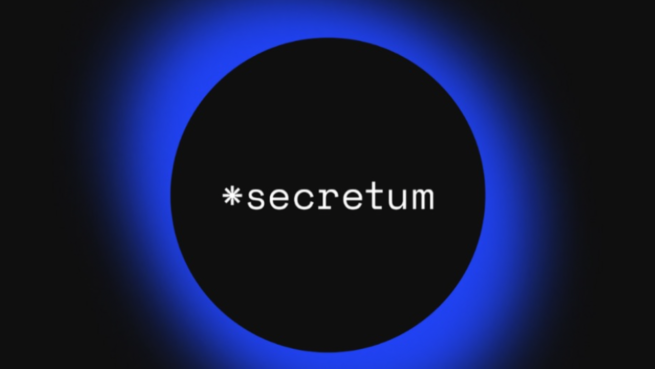DeFi, or decentralized finance, is one of the hottest topics in the crypto industry right now. It refers to using blockchain technology to create financial applications that are not controlled by any central authority. DeFi has been growing rapidly in the past few years, reaching a total value locked (TVL) of over $100 billion. But what are the trends that will shape the future of DeFi in the next few years? Here are some of the top 5 DeFi trends to watch out for in 2023-2025.

Traditional Financial Products Enter the DeFi Landscape
One of the main goals of DeFi is to replicate and innovate on some of the existing financial products in the traditional markets, such as derivatives, tranche lending, and wrapped assets.
Derivatives are contracts that derive their value from underlying assets, such as stocks, commodities, or cryptocurrencies.
Tranche lending is a form of lending that diversifies the risk and return of a pool of loans to different investors based on their preferences.
Some of the leading DeFi platforms that offer these products are MakerDAO, Uniswap, BarnBridge, and Saffron Finance. MakerDAO is the largest player in the DeFi derivatives market, with over $6 billion in TVL. Uniswap is the most popular decentralized exchange (DEX) that uses an automated market maker (AMM) model to provide liquidity and price discovery for various tokens. BarnBridge and Saffron Finance are two of the pioneers in tranche lending, offering different risk-return profiles for investors.
Wrapped assets are tokens that represent another asset on a different blockchain, such as Wrapped Bitcoin (WBTC) or Wrapped Ethereum (WETH).
WBTC and WETH are two of the most widely used wrapped assets in DeFi, representing over $10 billion and $6 billion in value respectively.
These products can offer new opportunities and benefits for both DeFi users and traditional investors. For example, derivatives can provide hedging, speculation, and arbitrage opportunities for DeFi users, while tranche lending can offer more flexible and customized lending options for borrowers and lenders. Wrapped assets can enable cross-chain interoperability and liquidity for different blockchains and assets.
DeFi Seeks to Monetize Blockchain Gaming
Blockchain gaming is another growing sector in the crypto industry that can benefit from DeFi integration. Blockchain games are games that use blockchain technology to create digital assets, such as non-fungible tokens (NFTs), that players can own, trade, or use in the game. DeFi can provide new ways for gamers to earn rewards, access liquidity, and leverage their in-game assets.
For example, gamers can use their NFTs as collateral to borrow or lend cryptocurrencies on DeFi platforms, such as Aave or Compound. They can also stake their NFTs to earn passive income or governance tokens on platforms such as Axie Infinity or Decentraland. They can also use their NFTs to participate in yield farming or liquidity mining on platforms such as NFTX or Unicly.
Some of the most popular blockchain games that have integrated DeFi features are Axie Infinity, Decentraland, The Sandbox, and CryptoKitties. Axie Infinity is a game where players can collect, breed, and battle fantasy creatures called Axies.
Decentraland is a virtual world where players can create, explore, and trade digital land and assets. The Sandbox is a game where players can create and monetize their own voxel worlds and games. CryptoKitties is a game where players can collect, breed, and trade digital cats.
Cross-Chain Technology Hopes to Solve Scalability Issues
As DeFi grows in popularity and demand, scalability becomes a major challenge for many blockchains. Scalability refers to the ability of a blockchain to handle a large number of transactions without compromising speed, security, or cost. Many blockchains suffer from congestion, high fees, and slow confirmation times when they reach their capacity limits.
Cross-chain technology is a solution that aims to enable interoperability and communication between different blockchains, such as Ethereum, Bitcoin, Binance Smart Chain, Solana, and others. This can improve the speed, efficiency, and security of transactions across different protocols and platforms.
There are three different types of cross-chain technology, such as bridges, sidechains, parachains, and rollups. Bridges are protocols that connect two or more blockchains and allow users to transfer assets or data between them.
- Sidechains are blockchains that run parallel to a main chain and inherit some of its features or security.
- Parachains are blockchains that connect to a main chain through a shared network called Polkadot or Kusama.
- Rollups are layer-2 solutions that move some computations off-chain and only submit the final results to the main chain.
Some of the leading cross-chain platforms that enable DeFi interoperability are Polygon, Cosmos, Polkadot, and Arbitrum.
Polygon is a framework that supports various types of scaling solutions, such as sidechains, plasma, and rollups.
Cosmos is a network of independent blockchains that communicate through a protocol called Inter-Blockchain Communication (IBC).
Polkadot and Kusama are networks of parachains that connect to a main chain called Relay Chain. Arbitrum is a roll-up platform that aims to improve the scalability and usability of Ethereum.
DEXs and AMMs Fuel DeFi Growth
Decentralized exchanges (DEXs) are platforms that allow users to trade cryptocurrencies without intermediaries or custodians. Automated market makers (AMMs) are algorithms that provide liquidity and price discovery for DEXs by using pools of tokens instead of order books. DEXs and AMMs are some of the most popular and widely used DeFi applications, as they offer lower fees, higher privacy, and more control over one’s funds than centralized exchanges (CEXs).
DEXs and AMMs have been growing rapidly in the past year, reaching new highs in terms of volume, liquidity, and users. According to Dune Analytics, the monthly volume of DEXs reached over $100 billion. The total liquidity of DEXs reached over $20 billion. The number of unique users of DEXs reached over 3 million.
Some of the most popular DEXs and AMMs in DeFi are Uniswap, SushiSwap, Curve, and Balancer. Uniswap is the largest and most used DEX in DeFi, with over $5 billion in TVL and over $1 billion in daily volume. SushiSwap is a fork of Uniswap that offers additional features, such as governance, rewards, and lending. The Curve is a DEX that specializes in stablecoin and low-slippage swaps. The balancer is a DEX that allows users to create custom pools with different weights and fees.
Governance Tokens Become More Important
Governance tokens are tokens that give holders voting rights and influence over the development and direction of DeFi protocols. It is a way to decentralize the decision-making process and incentivize participation and collaboration among the community. Here are some of the benefits of governance tokens:
- They align the interests of the protocol developers, users, and investors
- They reward the early adopters and supporters of the protocol
- They enable innovation and experimentation through proposals and feedback
- They increase the security and resilience of the protocol against attacks or failures
Some of the challenges of governance tokens are:
- They can be subject to low voter turnout or apathy
- They can be influenced by whales or malicious actors
- They can create conflicts or disputes among different stakeholders
- They can face regulatory uncertainty or scrutiny
Some of the most prominent governance tokens in DeFi are MakerDAO’s MKR, Compound’s COMP, Uniswap’s UNI, and Aave’s AAVE. MKR is the token that governs the Maker protocol, which allows users to create stablecoins called DAI. COMP is the token that governs the Compound protocol, which allows users to lend and borrow cryptocurrencies. UNI is the token that governs the Uniswap protocol, which allows users to trade cryptocurrencies on a DEX. AAVE is the token that governs the Aave protocol, which allows users to lend and borrow cryptocurrencies with flash loans and variable interest rates.
Parting shot
DeFi is a revolutionary movement that aims to democratize and disrupt the traditional financial system. DeFi has been growing rapidly in the past few years, reaching new milestones and attracting more users and investors. However, DeFi is also facing many challenges and opportunities in the next few years, as it adapts to the changing market conditions and user demands. The top 5 DeFi trends for 2023-2025 that we discussed in this article are:
- Traditional Financial Products Enter the DeFi Landscape
- DeFi Seeks to Monetize Blockchain Gaming
- Cross-Chain Technology Hopes to Solve Scalability Issues
- DEXs and AMMs Fuel DeFi Growth
- Governance Tokens Become More Important
These trends will shape the future of DeFi and have a significant impact on the crypto industry and the global economy. DeFi is not only a technological innovation but also a social and cultural phenomenon that challenges the status quo and empowers the people. DeFi is here to stay, and it will continue to evolve and surprise us with new possibilities and potential.
Personal Note From MEXC Team
Check out our MEXC trading page and find out what we have to offer! There are also a ton of interesting articles to get you up to speed with the crypto world. Lastly, join our MEXC Creators project and share your opinion about everything crypto! Happy trading!
Join MEXC and Get up to $10,000 Bonus!
Sign Up


